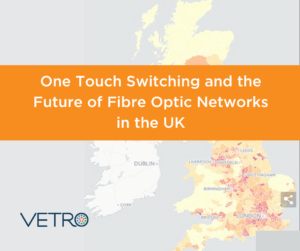High-speed internet is “the fourth utility.” Along with water, heat and electricity, it’s almost a requirement to participate in the modern economy and access basic needs like healthcare and education. According to the Federal Communications Commission (FCC), in 2020, approximately 21 million people in the United States lacked access to high-speed internet. This lack of access disproportionately affects rural areas, where nearly one-third of residents do not have access to broadband. To address the digital divide, billions of government dollars and other forms of public and private capital are being allocated to communications service providers who then need to decide on the broadband technology for their network. In this blog, we explore two of those technologies, fixed wireless and fiber optic-based broadband and discuss several factors that can help you decide on the best technology to meet the needs of the communities you plan to serve.
Costs to Build and Maintain the Network
Before you begin designing and deploying your network, you need to decide which makes the most sense financially – fixed wireless or fiber to the home/premise (FTTP). Initial costs of deploying fixed wireless are considerably lower than a fiber network. Fiber cables, conduit, and other supplies are typically more expensive than fixed wireless equipment, the labor and permitting costs are higher, and time to market slower, resulting in higher initial costs and a slower return on initial investment. Fixed wireless network deployments are quicker and easier to build, enabling your organization to go to market in a fraction of the time, at a fraction of the cost.
However, in addition to the build out of your network, it’s important to consider its daily operational costs and total lifetime. According to the Benton Institute, between 1-10% of a fiber network is replaced every ten years or so. Compare that to fixed wireless, where you’re looking at 50-80% of your investment needing replacement after just five years or less, based on today’s ever-increasing needs. Upgrading equipment in a fixed wireless network can be expensive, time-consuming, and seemingly endless; as the number of end users in your network grows, so too do their bandwidth needs. Fiber is scalable, predictable, and has a longer shelf life than fixed wireless networks – sometimes 10 times as long! This means you’re spending less time upgrading or maintaining your network assets, and more time growing your footprint. Initial cost of building FTTP may seem steep, but it’s an investment that will likely save your organization money in the long run.
Where You Build Your Network
You’ll want to take logistical considerations into account–scalability, durability, and ease of access. Fixed wireless, for example, is more susceptible to smaller physical obstructions – walls, trees, insulation, etc – and has physical limitations that make it a potentially difficult choice for providing services to your rural communities. Inclement weather, high winds, tree limbs, and more can affect your wireless build. The very nature of rural areas can make comprehensive wireless coverage a challenge. Where FTTP is contained and will always be able to deliver services to every premise point in a given area, dependent on funding, it’s a less sure thing for fixed wireless in part to the natural obstacles found in rural areas.
Of course, some communities are an exception. Fiber is not a one size fits all solution. Rural areas nestled in mountains, foothills, or sequestered in other ways may have their work cut out for them. Wireless signals can pass over rivers and mountains, whereas a fiber build requires permits, easements, or access to existing infrastructure to build. Some communities may benefit from a fixed wireless connection more than a fiber-based connection, and that’s just fine. For some providers, the cost, labor, and time to market just isn’t worth making the switch.
Network Performance
Both fixed wireless and fiber are capable of providing high-speed internet access but there are a few key performance differences between the two technologies.
1. Speed. Fiber can transmit data at extremely high speeds, with the average consumer offering now being 1Gps or even higher, up to 10Gbps. Oftentimes, you may find that fiber packages are also symmetrical, meaning the upload speed matches the download.
Fixed wireless is entirely dependent on distance from a tower, the type of equipment used, and signal strength at any given time, resulting in speeds at or around 50-100 Mbps download and a much lower upload speed.
2. Latency. Latency, or the amount of time it takes for data to travel from the source to the destination. In general, fiber has lower latency making it better suited for applications that require high bandwidth like online gaming and video conferencing.
3. Reliability. Fixed wireless and fiber broadband have their advantages and disadvantages. Three factors to consider are the costs to build and maintain, the location or terrain that the network is being built on, and overall network performance. While fixed wireless can be deployed faster at lower initial costs, the cost to maintain fixed wireless can be very expensive and continue to compound over time with operational expenditures and continuous network upgrades. Companies building networks today can take advantage of available funding streams to cover initial fiber network costs and ultimately deliver a better customer experience at a lower total cost of ownership.
Can Fixed Wireless and Fiber Broadband Co-Exist?
Yes. Many broadband providers chose to use a combination of both technologies to provide internet services to their customers. By combining the two technologies, you can offer customers high-speed internet access in areas where fiber isn’t available. You may choose to use fiber to connect the tower to the internet and then fixed wireless to transmit data to your customer’s location. For many locations, this is an optimal solution and will end up servicing the customer with a product that is both reliable, cost effective, and sustainable. Regardless of the technology you choose to deploy your network, a fiber management system of record, like VETRO FiberMap, is a critical tool to support your business. It ensures your network is properly managed, maintained, and optimized to meet the needs of your business and your customers.


